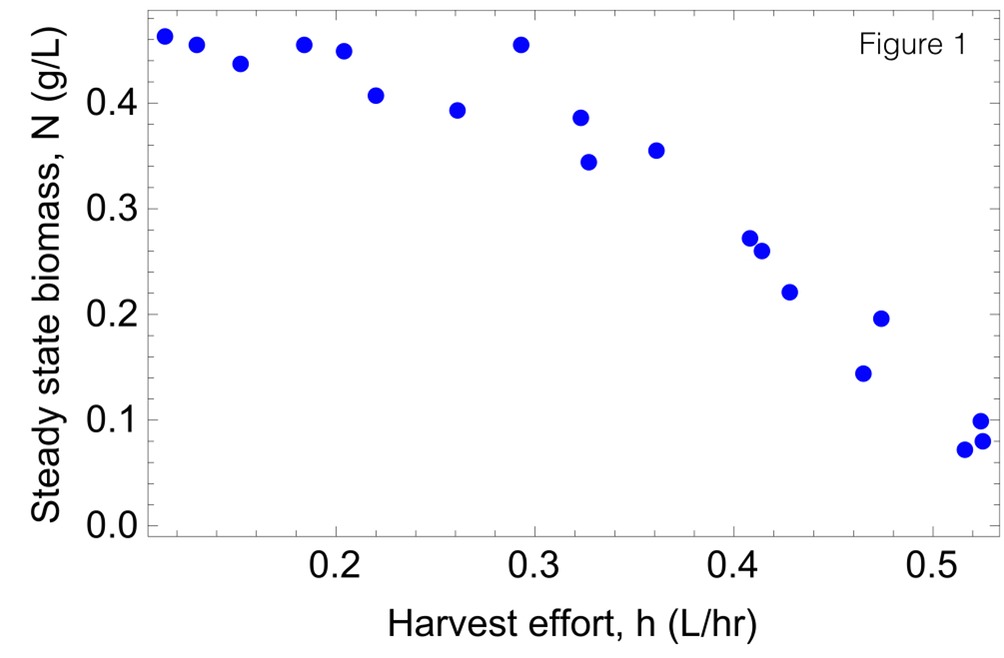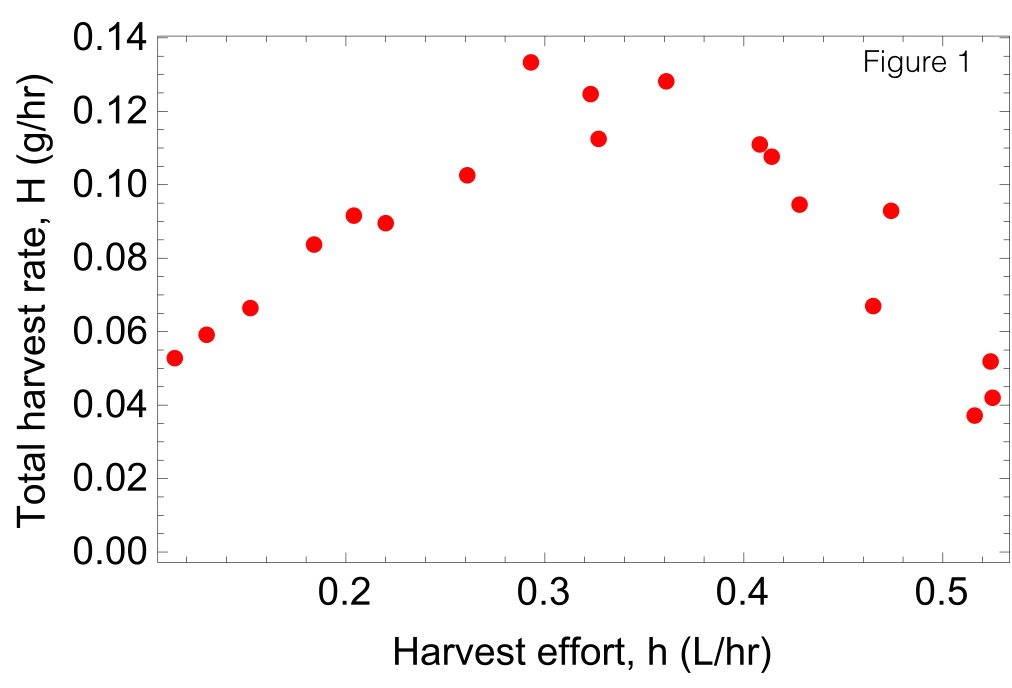The sustainable harvesting model in Example 4.4.5 of the textbook can be explored using data from an experimental system where a population of yeast is grown in liquid culture in a growth chamber called a chemostat. Different harvest efforts h can be applied to the yeast population by siphoning off liquid culture at different rates.
An experiment of this sort was conducted by Toda et al. (1980). They measured the steady state biomass of yeast in g/L as a function of the harvest effort h measured as the removal rate of liquid in L/hr. The results are shown in Figure 1 (the data can be downloaded from the link at the left).

You can see that, as we might expect, the steady state population size N got smaller as the harvest rate h increased. In part (a) of Example 4.4.5 of the textbook we used a model to derive an equation for population size N as a function of harvesting effort h. It too showed the sort of negative relationship seen in Figure 1.
Now the total harvest rate H in Example 4.4.5 is given by H = h N. We can therefore calculate H for each data point in Figure 1 by multiplying its x and y coordinates. Plotting the result against h then gives the relationship between the total harvest rate H and the harvest effort h. This relationship is shown in Figure 2

From Figure 2 you can see that the optimal harvest effort (that is, the one that yields the greatest total harvest rate) is around h = 0.35 L/hr.
References
Data are from Toda, K., Yabe, I. and T. Yamagata. 1980. Kinetics of biphasic growth of yeast in continuous and fed-batch cultures. Biotechnology and Bioengineering 22:1805-1827